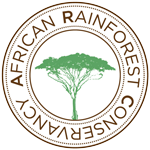I have just returned from several days visiting the region of Lindi – a coastal area so far south of Dar es Salaam that it practically calls Mozambique its next door neighbor. What a journey! After ten hours on the road, we arrived Friday evening and spent the night in the lively town of Lindi where I met up with TFCG Field Officer Nuru Nguya. The next morning, after a breakfast of chapatti, papaya, and strong black tea, a dirt road lined with coconut palms guided us to the village of Kikomolela. In addition to learning more about the plans for a health clinic, community members discussed their current challenges and needs, and how they use the forest and conserve it. In the afternoon, we visited the village of Likwaya, where we later pitched our tents and spent the night under a blanket of stars so bright that there really would have been no need for electricity even if it were available.
Kikomolela and Likwaya are two of seventeen villages in the Lindi region participating in TFCG’s REDD project (Reducing Emissions from Deforestation and Forest Degradation). This project, supported by the Norwegian Ministry of Foreign Affairs, seeks to financially compensate countries who have forests that are of global importance in reducing global climate change (15-20 percent of global greenhouse emissions are attributed to deforestation and forest degradation). The thought being that if the local communities who use these forests can successfully conserve them through careful land use planning and conservation practices then they deserve to be financially compensated for their efforts (you can learn more about REDD and the global carbon market here).
So what exactly are Kikomolela, Likwaya, and other villages involved in the project doing to conserve these forests? They are preparing land use plans that zone the forest into land for conservation reserves, agriculture, building new houses and community infrastructure, and cemeteries. The goal of REDD is not to totally prevent communities from using the forest, but rather to encourage them to use it in a sustainable way. Communities rely on the forests for daily existence, including fuel wood, wild fruits and animals for food, medicinal plants, water sources, building poles and timber for local construction, agriculture, and charcoal production (which is a source of income for many people). With the exception of agriculture (which now has its own designated land), these activities are allowed to carry on in forested areas, but in a sustainable way and often with guidelines set out in village bylaws. This means introducing fuel-efficient cook stoves, only taking mature trees for timber/poles for house construction, and providing seed funding and training for income-generating projects like beekeeping, animal husbandry, and farming, so that communities do not have to depend on the forest to earn a living.
The more time I spent in the villages the more evident it became that we have to take care of the people that we are asking to take care of their forests for the good of the rest of the world. Again and again I heard from community members that the biggest challenges they face are access to clean drinking water (women and girls walk for hours to collect water that is rife with disease and in the case of Lindi region often saline due to its proximity to the coast), basic health services, and education (most villages are without secondary schools and some even lack primary schools).
But is it possible to simultaneously advance forest conservation and improve the lives of the communities who depend on them? If we build schools and health clinics, dig wells, and support new agriculture practices will people move in and exert even more pressure on the forest? What do you think?
This morning, I head inland to the Eastern Arc mountains where I will visit the South Ngurus and Uzungwa Scarp. It will be interesting to compare the coastal forests that I have just come from to the Eastern Arc rainforests. I will be back in a week to share with you what I have found (and lots of pictures!) and some ideas for how we can work together to conserve these forests and at the same time improve the lives of the people who are tirelessly working to keep them standing.
Kate McLetchie, Executive Director
Dar es Salaam, Tanzania

Leave A Comment